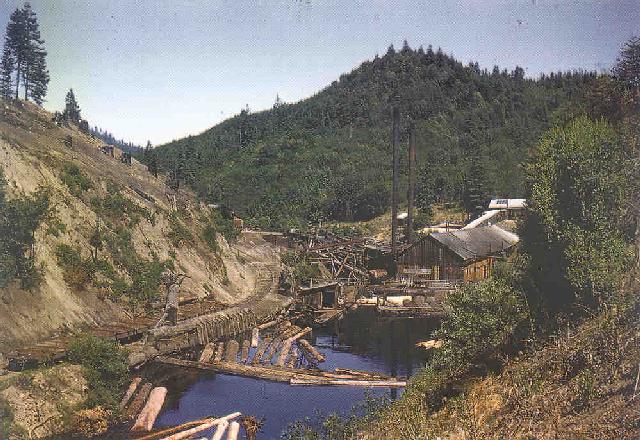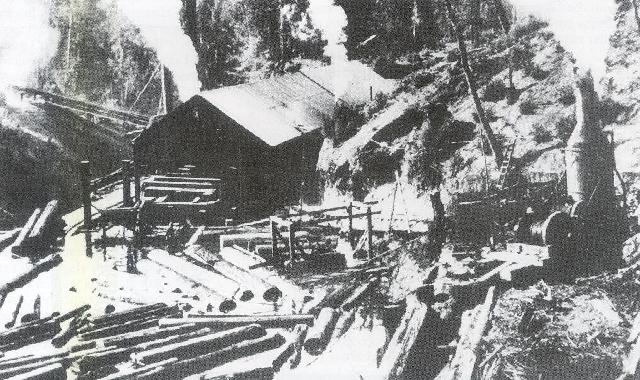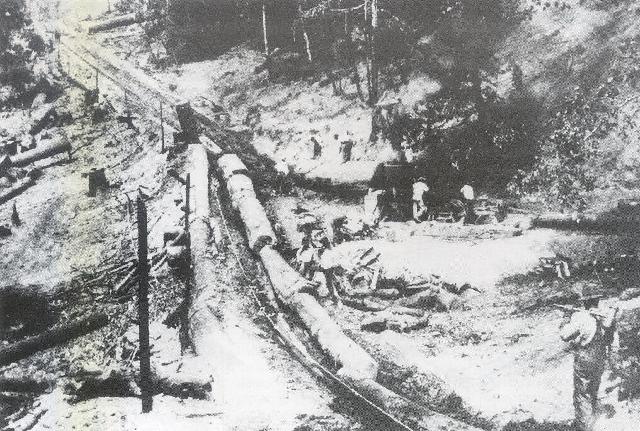
Santa Cruz Lumber Co. Mill.
John Cummings photo dated 1949
The Real Santa Cruz Lumber Co.
The Santa Cruz Lumber Company was organized in 1923 by George Ley, a Santa Cruz native, who owned 12,000 acres of prime old-growth redwood stands purchased from the Henry Cowell Estate, and which were located in the upper Pescadero Creek area. George Ley was a director of the new company, and the largest stockholder. Nineteen other stockholders were originally listed, mostly folks from the local area.
In that same year, a sawmill was constructed on the head waters of Pescadero Creek at a location known as Waterman Gap, and a wood dam built to provide a mill pond on the south side of the mill itself. The road from what is now CA State Highway 9 to the mill went only to the hillside above it. All equipment and supplies were lowered to the mill by a highline or a small incline tramway.

Santa Cruz Lumber Co. Mill.
John Cummings photo dated 1949
The mill was originally operated entirely by steam. Two boilers under its main floor burned sawdust, and powered the entire facility. Maximum capacity of the nine-foot double cut band saw was 60,000 board feet per day, and output was set at 50,000. Except for about 12% fir, all lumber milled was redwood. A typical year saw production at about ten-million board feet.
In earlier days, 80 to 85 men were employed, both at the mill, and logging in the woods. Most were single, lived in the bunk houses, and ate at the mess hall provided by the company. These facilities were located near the end of the road leading to the mill. Later modernization of mill and equipment gradually reduced the number of employees to around 50.
The area around the mill was logged first with the logs skidded directly into the mill pond. During the first few years, the mill was shut down during the winter months, but as the area around it was cleared, space became available to cold deck logs and the mill operated year round. Later, a large area was cleared west of the mill, and leveled for the storage of logs and milled lumber. Logs from this area were carried to the mill pond by highline. An inclined tramway was used to carry milled lumber up the hillside to the road for shipment to the company's three retail outlets in Boulder Creek, Felton, and Santa Cruz. White trucks were bought for this purpose, and as decades passed, were used until worn out and replaced by more modern trucks.

Original mill and pond before the
railroad.
The donkey on the hillside drags logs directly into the mill
pond.
Company photo in the 20's
As the trees were cut down adjacent to the mill site, and lumbering progressed further afield, chutes were used to move logs to the pond.

Early Chute Logging.
Company photo in the 20's